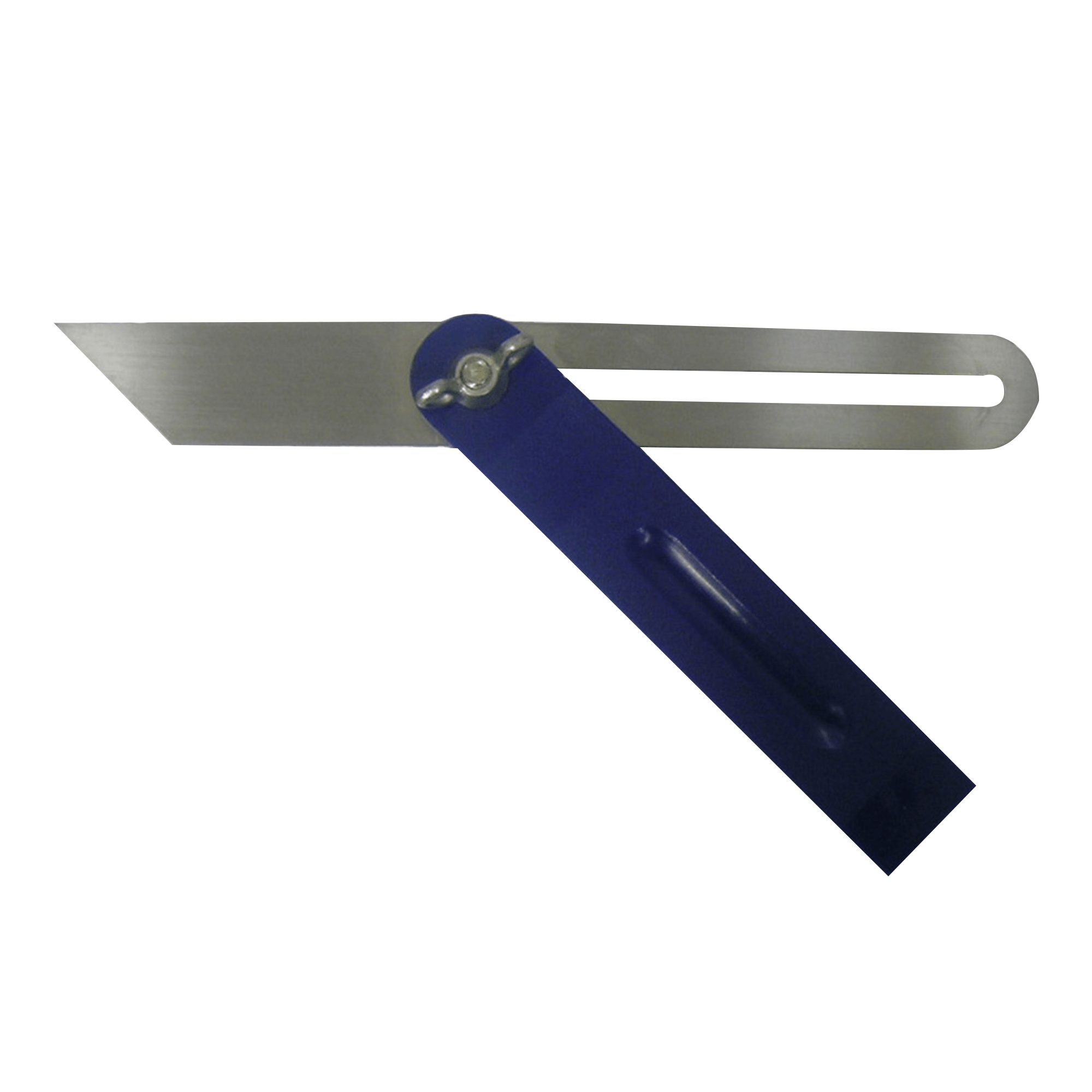Description
THIS PRODUCT: Size 200mm, Used for the Setting & Duplicating of Angles in Carpentry, 1.5mm Stainless Steel Blade, Tough ABS Body.
IN GENERAL: A sliding T-bevel, also known as a bevel gauge or sliding bevel, is a hand tool used in woodworking, carpentry, and other trades to measure, transfer, and replicate angles accurately. It consists of a flat, straight metal blade with a pivoting handle or stock attached at one end. The handle can be locked at various angles to match the desired angle, allowing users to set and transfer angles with precision. Here’s a brief description of a sliding T-bevel and some common uses:
Description:
- Blade: The blade of a sliding T-bevel is typically made of metal, often stainless steel, and is flat and straight. It serves as the reference surface for angle measurement and transfer.
- Handle or Stock: The handle, also known as the stock, is attached to the blade at one end. It is designed to pivot freely and can be locked in place at various angles using a thumbscrew or wing nut.
- Angle Scale: Many sliding T-bevels have an angle scale or protractor markings on the handle, allowing users to read and set specific angles accurately.
- Locking Mechanism: The locking mechanism secures the handle at the desired angle, ensuring that the measured angle remains constant during use.
Common Uses:
- Angle Measurement: Sliding T-bevels are used to measure and replicate angles accurately. Carpenters, woodworkers, and metalworkers often use them to determine angles on workpieces or in existing structures.
- Layout and Marking: Sliding T-bevels are essential tools for laying out and marking angles on materials such as wood, metal, and plastic. They are particularly useful for transferring angles from one piece to another, ensuring precise cuts and joints.
- Roof Framing: In roofing and carpentry, sliding T-bevels are used to measure and replicate the angles required for cutting rafters, hip and valley rafters, and other roof framing components.
- Trim Work: Woodworkers and carpenters use sliding T-bevels to set and replicate angles when cutting moldings, trim pieces, and beveled edges, ensuring a precise fit in finishing work.
- Furniture Making: Furniture makers use sliding T-bevels to set angles for joinery, mitered corners, and other intricate details in furniture construction.
- Welding and Metal Fabrication: Metalworkers use sliding T-bevels to measure and transfer angles accurately when fabricating metal components and structures, ensuring proper fit and alignment.
- Quality Control: In manufacturing and quality control processes, sliding T-bevels are employed to verify the accuracy and consistency of angles on machined or fabricated parts.
- DIY Projects: Home improvement enthusiasts and DIYers use sliding T-bevels for a wide range of projects, including building shelving units, cabinets, and home renovations.
- Carpentry Layout: In framing and construction, sliding T-bevels help carpenters mark and replicate angles for door frames, window frames, and other structural elements.
- Art and Craft Projects: Sliding T-bevels are used in art and craft projects that require precise angle measurements and cuts, such as model making and sculpture.
Sliding T-bevels are versatile and valuable tools for professionals and hobbyists alike, providing a straightforward and reliable means of measuring, transferring, and setting angles accurately. Their flexibility in measuring and replicating angles makes them indispensable for tasks that require precision and attention to detail.


